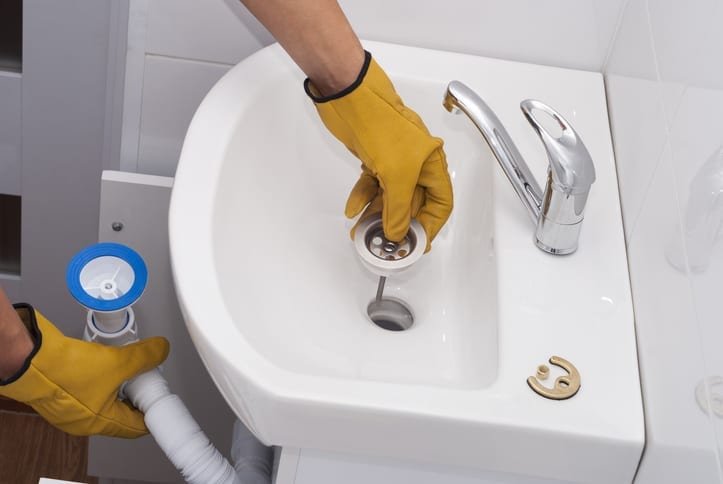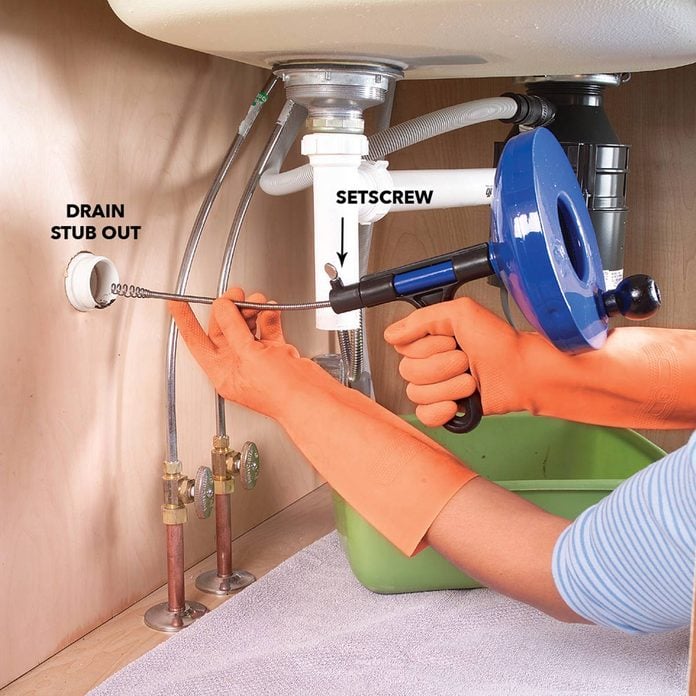The author is making a few great annotation on the subject of What To Do When Your Kitchen Sink Won’t Drain in general in the article further down.

It's not regular for your cooking area sink to block several times in one month. If your sink obstructs twice a week, there's some trouble going on.
An obstructed cooking area drainpipe does not simply reduce your tasks, it deteriorates your entire plumbing system, little by little. Here are some common habits that urge sink clogs, and also exactly how to prevent them.
You need proper garbage disposal
Reusing waste is great, yet do you take notice of your natural waste also? Your kitchen area must have two separate waste boxes; one for recyclable plastics and another for natural waste, which can come to be compost.
Having a marked trash can will aid you and also your household avoid tossing pasta as well as other food remnants down the drain. Typically, these remnants soak up wetness and come to be clogs.
The mistake isn't from your kitchen area sink at all
Perhaps the problem isn't from your cooking area sink, however the entire water drainage system. In such a case, you might observe that other sinks and also drains obtain blocked every other week. You need an expert plumbing service to repair this.
You're throwing coffee down the tubes
Utilized coffee premises as well as coffee beans still soak up a considerable quantity of moisture. They may appear little sufficient to throw down the drainpipe, but as time takes place they start to swell and use up even more area.
Your coffee grounds must go into organic garbage disposal. Whatever fraction leaves (possibly while you're depleting) will be dealt with throughout your monthly cleanup.
You've been consuming a lot of greasy foods
Your kitchen area sink might still get blocked despite having natural waste disposal. This may be due to the fact that you have a diet rich in oily foods like cheeseburgers.
This oil coats the insides of pipes, making them narrower and also even more clog-prone.
Use a plunger
Your pipe wasn't fixed correctly in the first place
If you've been doing none of the above, but still get regular blockages in your kitchen area sink, you should call a plumber. There might be a trouble with how your pipes were installed.
While your plumber gets here, check for any type of leakages or abnormalities around your cooking area pipelines. Do not try to deal with the pipelines on your own. This might trigger a mishap or a kitchen area flood.
Someone tried to wash their hair in the kitchen sink
There's a right time and area for every little thing. The kitchen area sink is simply not the ideal location to wash your hair. Washing your hair in the kitchen sink will make it obstruct one way or another unless you utilize a drain catcher.
While a drain catcher might catch a lot of the results, some hairs might still make it through. If you have thick hair, this may suffice to decrease your drain and eventually create a clog.
There's more dust than your pipelines can manage
If you get fruits directly from a ranch, you may discover more cooking area dust than other people that shop from a mall. You can conveniently fix this by cleansing the fruits as well as veggies correctly before bringing them right into your home.You need correct waste disposal
My Kitchen Sink Won’t Drain - What Should I Do?
If Your Sink Has a Garbage Disposal...
Turn on the disposal. If the disposal hums and doesn’t turn, then there’s clog in the disposal unit.
Go to your circuit breaker panel, and switch off the circuit breaker to your garbage disposal.
Back in your kitchen, double-check that your garbage disposal is off by trying to turn it on. The disposal should not move, and it should not make any noise.
Lie down underneath your sink so that you can see and access the bottom of the disposal unit. Look for a hole that looks like the head of a hex-head bolt in the center of the unit.
Place an Allen wrench inside this hole and turn it from side to side until you feel a decrease in resistance and are able to rotate the wrench completely in a single direction. This action rotates your disposal’s blade manually.
Put the wrench aside, and press the disposal unit’s reset button or switch.
Flip your garbage disposal’s circuit breaker switch back on, and turn on the unit to see if the obstruction has cleared. If it hasn’t, repeat the steps above until the obstruction is removed.
How to Unclog a Kitchen Sink Drain
If you have a double bowl sink, seal one side of the sink with an airtight lid or a second plunger before plunging the other side. Otherwise, you won’t be able to create adequate suction.
Place the cup of the plunger completely over the drain opening.
Turn on the faucet, and let the water run until it completely covers the cup of the plunger.
Start plunging by pushing the plunger down and pulling up again in order to build up suction. Make sure that the edges of the plunger stay in contact with your sink, or else you’ll lose the suction.
If you have trouble forming a seal between your sink and plunger, add petroleum jelly to the mouth of your plunger, and try again.
Plunge about five or six times before removing the plunger to see if water starts to drain properly. In some cases, you’ll even be able to feel the clog become dislodged while you plunge because suddenly there will be much less resistance. Repeat the plunging process until the clog clears.
Once water is draining properly again, run hot water down the drain for 5 minutes to help clear away grease, grime, and debris from the clog. https://www.plumbingjoint.com/blog/2019/august/my-kitchen-sink-won-t-drain-what-should-i-do-/

My Kitchen Sink Won’t Drain - What Should I Do?
If Your Sink Has a Garbage Disposal...
How to Unclog a Kitchen Sink Drain
https://www.plumbingjoint.com/blog/2019/august/my-kitchen-sink-won-t-drain-what-should-i-do-/
As a devoted reader on Five Ways to Fix a Slow Sink Drain, I thought sharing that short article was worthwhile. Do you know about somebody else who is fascinated with What To Do When Your Kitchen Sink Won’t Drain? Please feel free to share it. I take joy in reading our article about Five Ways to Fix a Slow Sink Drain.
Book Your Service